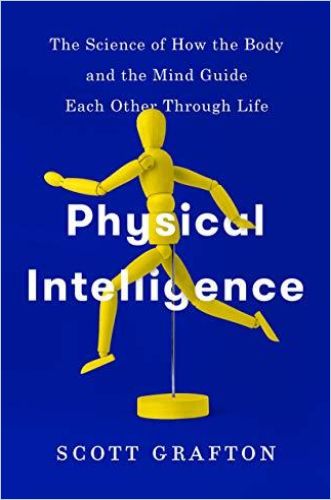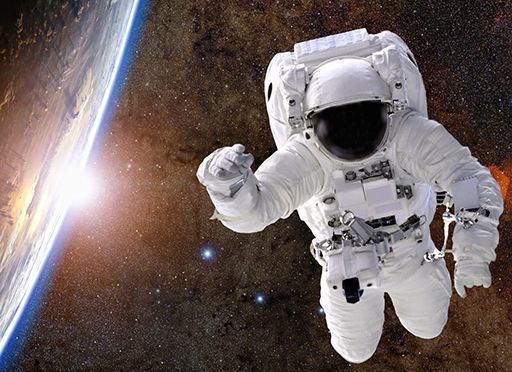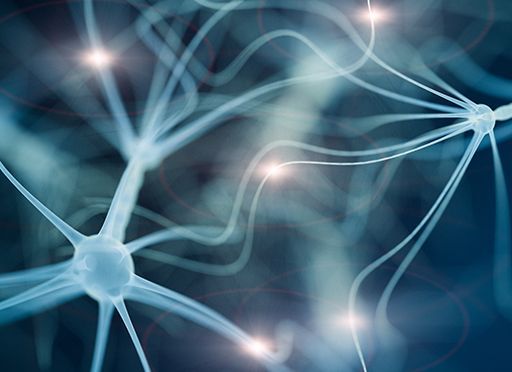Neuroscientist Scott Grafton took to the wilderness to further understand the mostly unconscious, almost magical, coordination between body and brain.

How You Move
Bedrosian Coyne Presidential Chair in Neuroscience at the University of California, Santa Barbara Scott Grafton directs the UCSB Brain Imaging Center. He details how the largely unconscious coordination of body and mind is a marvel of learning, feedback and instant adjustment. Grafton finds elegant, though sometimes overly technical, ways to make a complicated subject engaging and comprehensible.
Mental Mapping
As Grafton walks into the wilderness, his sense of awareness expands. The brain creates a mental map of “operational space” by combining sense perceptions and joint positions. This enables your interaction with the world. Artificial intelligence (AI) cannot duplicate this human ability.
Close your eyes during a walk in the forest and you realize your brain’s been mapping the surrounding surfaces: how the trail slopes and how slippery it is, any rock or branches, wet ground. Complex territory requires your full attention as your brain constantly updates this data.
While it feels relatively effortless to navigate through physical space, under the hood the brain has to do an enormous amount of computing to avoid crashing into surfaces.Scott Grafton
People judge how high steps are or whether objects are within reaching distance. Experience teaches rock climbers which features to grasp on a wall. Experts develop more certainty about what will best support them, and which routes are best. No learning-capable robot has this sense.
Proprioception is the aggregated sense of body position that “sensory organs” in muscles, joints and ligaments supply. This input feeds a “body schema” through which your brain tracks the body’s constant change in position. Visual perception acts as a check on this sense. The brain integrates all perceptions into a single body map. This body sense supersedes conscious thought. Experience sharpens proprioception.
Certain body parts, such as fingers, take up more space on the map because of their increased sensitivity. Athletes cross-train to help prevent map disruption.
Feedback Control
Human feedback keeps track of body movement and anticipates your next moves. Sophisticated signaling by the brain provides the visual sense of a consistent, stable world. This “efference copy” overrides other sensory signals and informs senses such as touch.
Grafton utilized efference to make physical adjustments while spearing fish. By staying loose and allowing his focus to be diffuse, Grafton adjusted movements within fractions of a second. Adjusting more deliberately and consciously would have cost him crucial milliseconds, and he would have missed his fish. Sports discourage deliberation in favor of reflexive adjustment.
Neurons don’t directly connect the brain to a muscle. There are at least two neurons involved, one from the brain to the spinal cord and another from the spinal cord to muscle. “Command neurons” have primary influence over one muscle; this frees the brain to create whatever movement it wants – whether familiar or new – with guidance from other areas of the brain.
Of the infinite way you might use your hands around the house, you typically need only 14 grips to handle most objects.Scott Grafton
Combinations of cortical motor neurons are infinite in variety. This gives gymnasts, dancers and surgeons, for example, surprising physical control. A few configurations cover most of the action the hand uses and beyond that, the brain can refine its control.
Hybrid Reference Frames
Humans navigate poorly when relying only on their internal senses of direction. Each adjustment they make adds errors of over- and under-correcting, and these errors add up. Only integrating external frames of reference keep you on course. People intuitively use subtle features of a landscape to navigate.
The brain constantly revises its reference frame as you move in space. The brain uses a “single reference frame” for internal mapping, but those frames change. People base frames on where the eyes look or the head orients; these change constantly. The inner ear senses gravity, which provides a dependable frame to navigate.
Humans and bears solve problems and learn. No matter how cleverly humans design bear-proof boxes, bears figure out how to open them. Through the “assembly of constituent acts” – stringing together a sequence of actions to achieve a purpose – bears figure out how to open latches on bear boxes, shatter car windows or rip up back seats to get to a trunk full of food.
Reinforcement learning works best when the reward is clear and the learner has many opportunities to find a solution. For robots, slight environmental changes force them to relearn a behavior from scratch. Humans – and bears – apply learning in a general way from one problem to the next.
Animals from earthworms to humans manipulate their environment for comfort. Purpose itself does not make an object a tool. Manipulating that object to perform specific work does.
The conceptual leap for tool use was understanding how to focus and amplify energy not only with the body, but through the medium of a held object.Scott Grafton
To crack a nut, a child of three might throw it to the ground or hit it with a rock. By age five, the child intuitively knows how to marshal the laws of dynamics to multiply his rock-hitting force. Different neurons recognize different shapes and what might fit best in the hand.
Walk
Exertion deprives muscles of the oxygen they need to burn and anaerobic metabolism creates lactic acid in muscles that inhibit contraction. The brain creates fatigue to protect the body from over-exertion. Athletes push through mental fatigue to drive performance. They collapse after wins because they mastered the struggle between perseverance and fatigue. Fatigue increases pessimism or depression.
Complex environments with novel challenges require the brain and body to engage. This leads to longer-standing health benefits than does, for example, repetitious treadmill exercises.
Fun, Plus Jargon
Scott Grafton offers fascinating revelations about how the body and mind function together. Most are compelling and will likely change how you regard your beloved corpus. His trip into the wilderness is a mildly amusing gimmick, and Grafton makes the most of it. His fish-speaking adventures prove especially compelling. But Grafton cannot help but vest, endlessly, in the dense polysyllabic jargon of his astonishingly complex field. The jargon repeatedly proves Grafton’s expertise in neuroscience, but seldom aids the reader. Grafton walks a difficult tightrope between maintaining his credibility with his peers and reaching an audience of laypeople.





